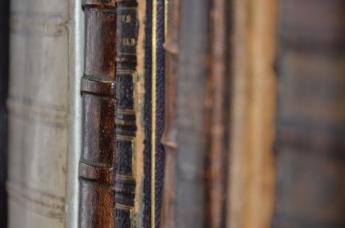Accessibility vs. access: How the rhetoric of rare is changing in the age of information abundance
What is really rare"? Maria Popova asks the question which has always been essential for antiquarian booksellers, and which becomes more and more essential in our fully digitalized world where works are accessible by Google Books or The Library Archive which were buried in archives for centuries. In former times the antiquarian bookseller very often was the only one who brought these rare treasures to light. What now?

“A Rare Glimpse of William Burroughs’ Belongings, proclaimed a recent Fast Company headline. But what does “rare” really mean these days? A photograph indexed by Google is hardly “rare,” what with being instantly accessible to a few billion people. The real question, then, becomes how many will actually access what’s accessible and how this changes the rhetoric of rarity.
Over the past few years, the fledgling field of the digital humanities has made significant strides with a number of ambitious digitization projects bringing online rare cultural artifacts - manuscripts, canvases, celluloid, marginalia - that used to rot away in institutional archives. But while these efforts, both government-subsidized and privately initiated, may have made a wealth of information accessible, it’s an entirely different story to ask how many people these materials have reached - how many people have actually gained access to them - and it’s one that harks back to the shifting relationship between scarcity and value."
Over the past few years, the fledgling field of the digital humanities has made significant strides with a number of ambitious digitization projects bringing online rare cultural artifacts - manuscripts, canvases, celluloid, marginalia - that used to rot away in institutional archives. But while these efforts, both government-subsidized and privately initiated, may have made a wealth of information accessible, it’s an entirely different story to ask how many people these materials have reached - how many people have actually gained access to them - and it’s one that harks back to the shifting relationship between scarcity and value."
What is really „rare“? Maria Popova asks the question which has always been essential for antiquarian booksellers, and which becomes more and more essential in our fully digitalized world where works are accessible by Google Books or The Library Archive which were buried in archives for centuries. In former times the antiquarian bookseller very often was the only one who brought these rare treasures to light. What now?
